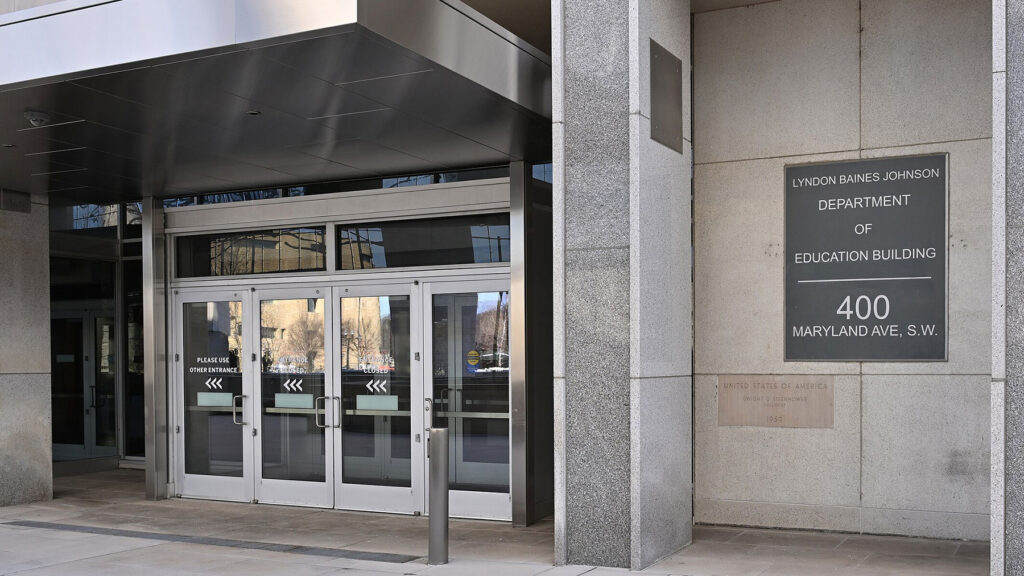Why Returning Education Entirely to the States is a Dangerous Proposition
Dismantling the Department of Education and returning education to the states will put all students in the U.S. at risk

Some ideas sound appealing in theory but unravel upon closer inspection. The push to eliminate the U.S. Department of Education and return education entirely to the states is one of them. Stripping away federal oversight would jeopardize civil rights protections, weaken accountability, and dismantle programs that millions of students — especially those from traditionally underserved communities — rely on. The truth is, this isn’t about improving education; it’s a political stunt with devastating consequences.
The individuals championing this idea at today’s executive order signing aren’t serious about student success — they are the very same people who have presided over stagnant or declining student achievement in states where they already wield power. Leaders in these states (ID, FL, IN, IA, OH, TN, TX, and VA) have had two decades at the helm, and student outcomes have not improved. If state leaders couldn’t move the needle with existing authority, why should we trust them with even more control? Handing state leaders the keys to the entire system won’t put education on the right track — it will steer us straight into disaster.
How? Eliminating the Department of Education would gut federal protections that ensure students can learn in safe, supportive environments. It would roll back decades of progress in protecting students of color, students with disabilities, multilingual learners, and students from low-income backgrounds. Before federal oversight, millions of students were denied basic educational opportunities, and states routinely ignored glaring inequities. We cannot afford to return to that era.
Without federal enforcement, states would have free reign to underfund schools, ignore disparities, and abandon critical data collection that highlights gaps in access to advanced coursework, fair discipline policies, and adequate special education services. Students’ civil rights would be left in the hands of agencies with neither the expertise nor the will to hold states and schools accountable. We know what happens when states are left unchecked — history has shown us time and again that inequities deepen.
This proposal isn’t about improving public education for students; it’s about dismantling it. Public education is already facing unprecedented challenges — unfinished learning from the pandemic, teacher shortages, and funding disparities. Instead of addressing these issues with meaningful investments and evidence-based solutions, this administration is focused on chaos for the sake of chaos. Their agenda includes funneling public dollars into unaccountable private schools, expanding voucher programs that fail students, and abandoning the very oversight that ensures schools serve all children, not just a privileged few.
Eliminating the Department of Education would also throw higher education into disarray. Pell Grants, student loan programs, and federal financial aid systems would be tossed into the hands of agencies unprepared to manage them. Borrowers already struggle to navigate a complicated loan system — imagine handing it over to the IRS. Millions of students, particularly those who are first in their families to attend college, depend on these resources to access higher education. This proposal would destabilize their futures and weaken America’s workforce at a time when a postsecondary credential is more necessary than ever.
The real question isn’t whether the Department of Education should exist. It’s why those pushing to eliminate it are so eager to dismantle a system designed to protect and uplift students. The cost of closing the Department is clear: weakened civil rights protections, turmoil in financial aid, and a return to a system where education is a privilege for the few rather than a right for all. Student achievement will stagnate; inequities will grow. Giving states even more control isn’t the answer. “Returning education to the states” means a return to separate but unequal.
So what’s next? With many key decisions about public education now shifting to the states — and state leaders across the country expressing concern about their capacity to manage the fallout — we must act urgently. Protecting our students means protecting the core functions of the U.S. Department of Education. That’s why EdTrust has created an advocacy toolkit to help advocates organize and mobilize, ensuring local leaders uphold their responsibility to students. We’ve also developed an interactive map that shows what each of the 50 states stands to lose without critical federal support.
Photo: Copyright 2025, G. Edward Johnson. CC-By Attribution